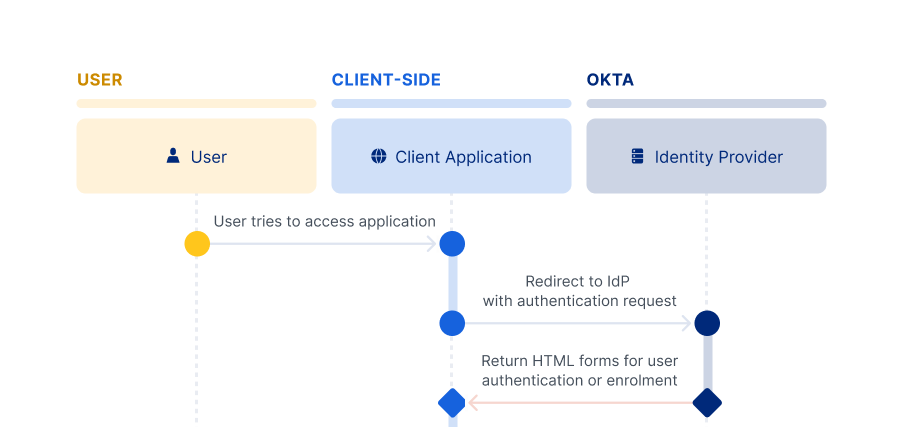OAuth 2.0 客户端凭证 - Client Credentials
上一篇 OAuth 2.0 的文章中介绍了 OAuth 2.0 标准中颁发令牌的几种模式,这篇文章中将使用 .NET 5 实现客户端凭证模式( Client Credentials ),客户端凭证模式适合于没有 GUI 的命令行应用 CLI或者M2M设备。
分析
客户端凭证模式比较简单,客户端直接通过本机凭证获取令牌,然后使用令牌访问资源服务器。

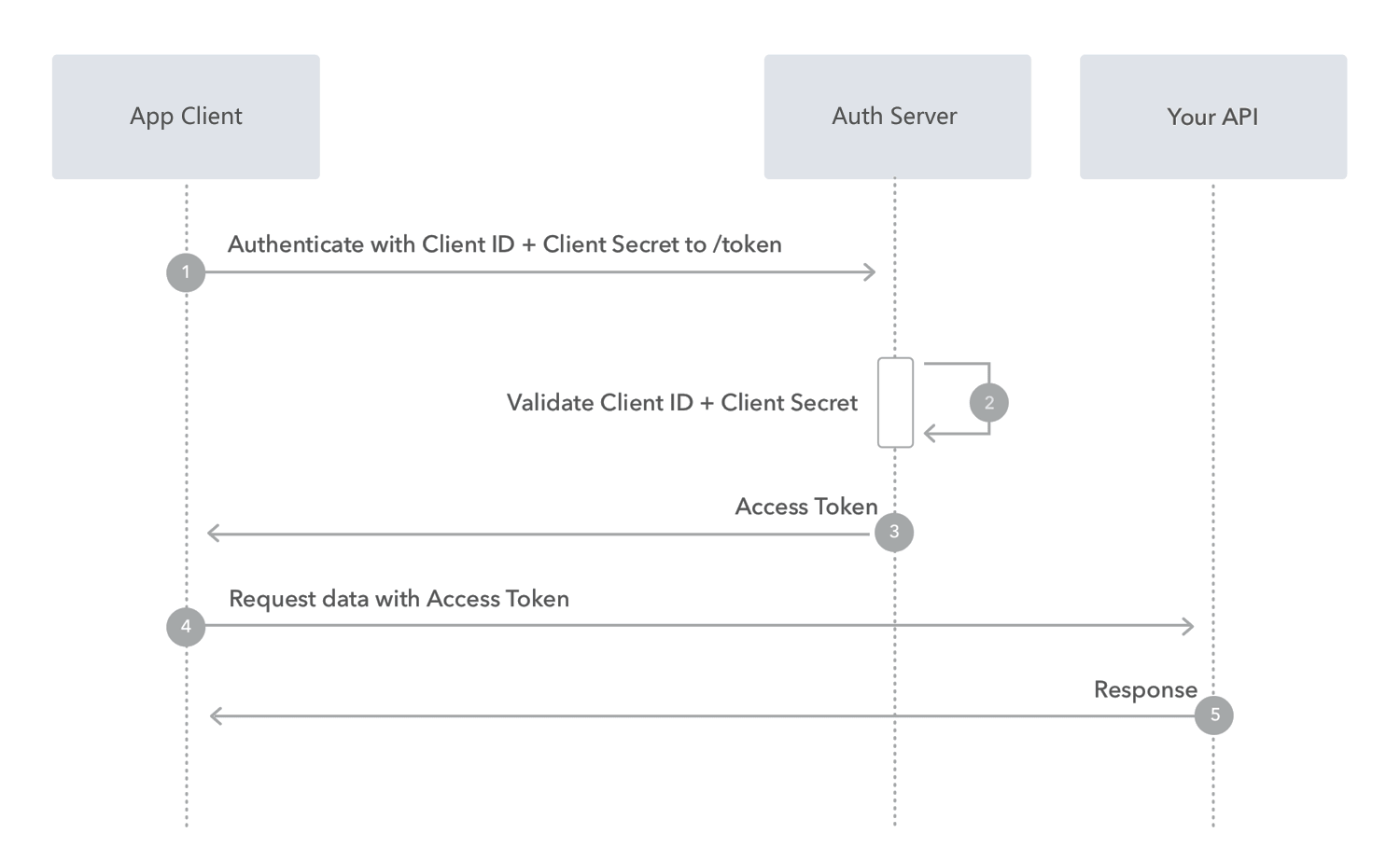
实践
● 开发工具和环境
- VSCode
- Postman
- .NET 5.0
- Windows Terminal(看个人喜好,命令行工具即可)
● 创建授权服务器(Authorization Server)
打开 Windows Terminal,然后输入如下命令创建一个 ASP.NET Core Empty 应用
等待创建结束,用 VSCode 打开就可以看到这样一个项目:
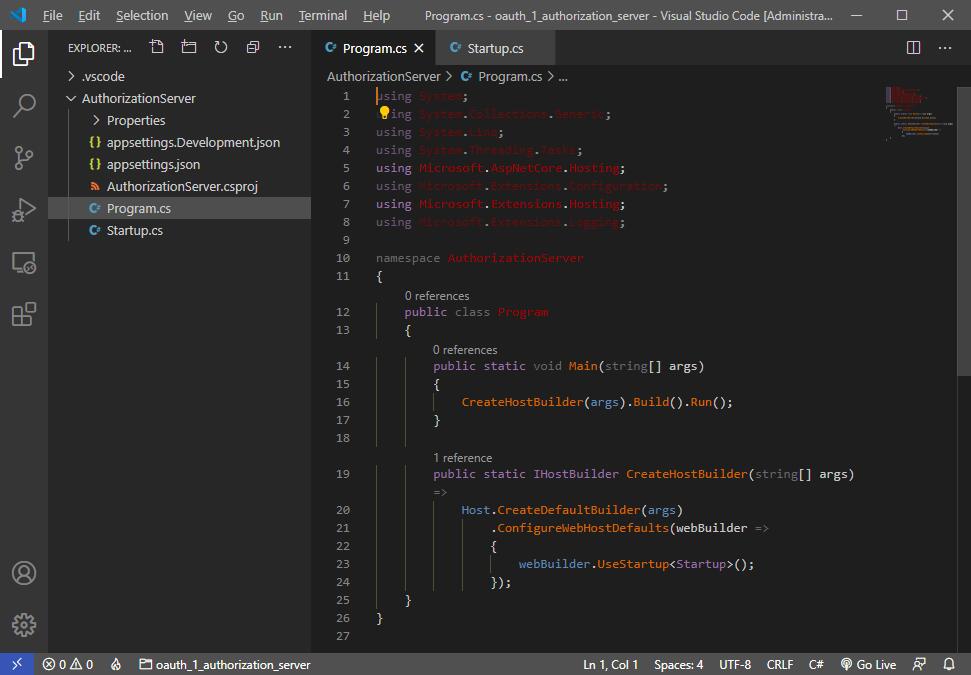
紧接着安装 IdentityServer4 运行库,这是一个开源的基于 OpenID Connect 和 OAuth 2.0 标准的身份验证,单点登录和 API 访问控制框架,输入如下命令安装此运行库
等待运行结束,查看一下 Your-Project-Name.csproj,就可以看到已经安装的 IdentityServer4 PackageReference,我们创建一个 IdentityConfig 类用于配置授权服务器应该如何工作,新增一个 IdentityConfig.cs
1 | using IdentityServer4.Models; |
接下来配置一下启动管道,把配置注入进去,打开 Program.cs,找到 ConfigureServices 添加如下:
1 | public void ConfigureServices(IServiceCollection services) |
启用 IdentityServer4 身份验证
1 | public void Configure(IApplicationBuilder app, IWebHostEnvironment env) |
到这里授权服务器就完成了,可以验证一下授权服务器的状态,使用 Postman 请求获取已知的配置,不过在此之前,先要添加 Dotnet Core Https 的开发证书,这样我们请求 https 的时候才不会报 The SSL connection could not be established 的错误,在授权服务器的根目录执行如下命令信任此服务证书:
然后在控制台输入运行命令(启动以后会自动生成一个 tempkey.jwk 文件,这是自动创建的临时凭证)
授权服务器启动以后,使用 Postman 发送一个 Get 请求验证一下服务器状态:
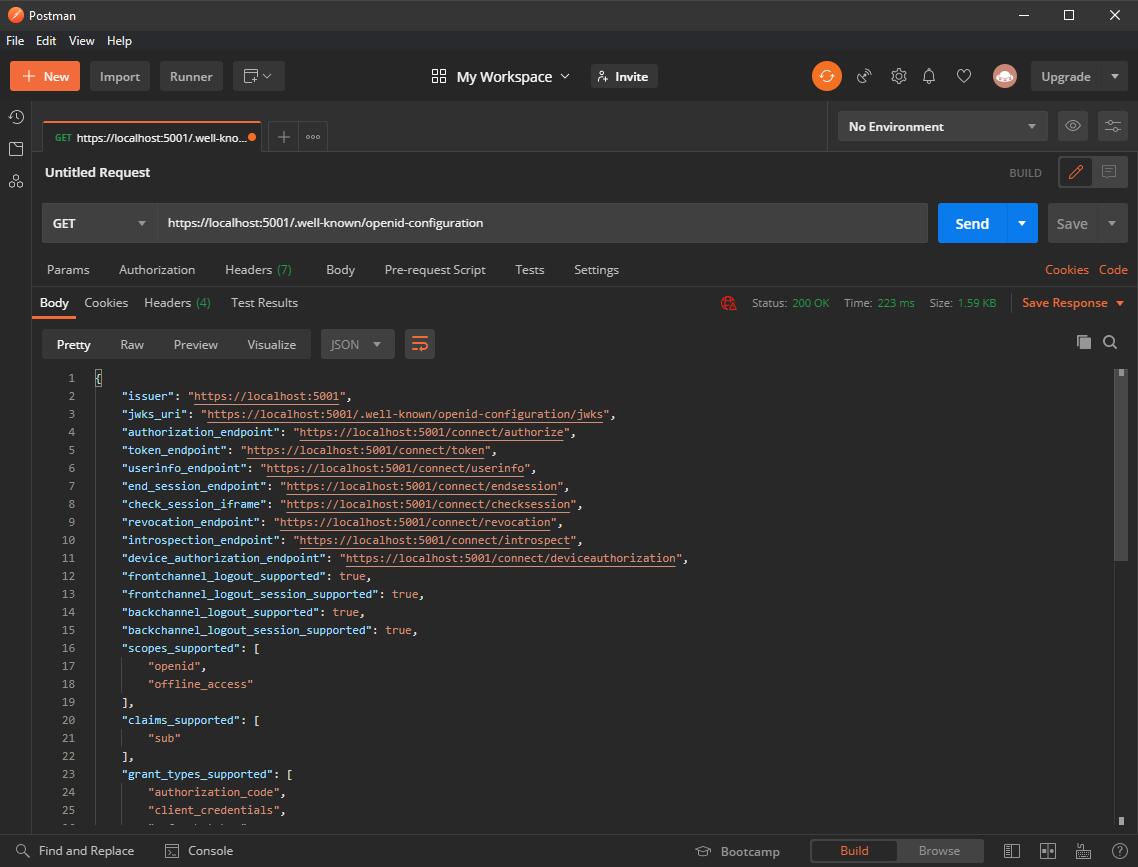
● 创建资源服务器(Resource Server)
在授权服务器的同级目录下,创建一个资源服务器,打开 Windows Terminal,然后输入如下命令创建一个 ASP.NET Core Web API 应用
创建结束后,打开项目,会看到模板自动创建了一个默认的 API,这个 API 随机返回一些天气数据。
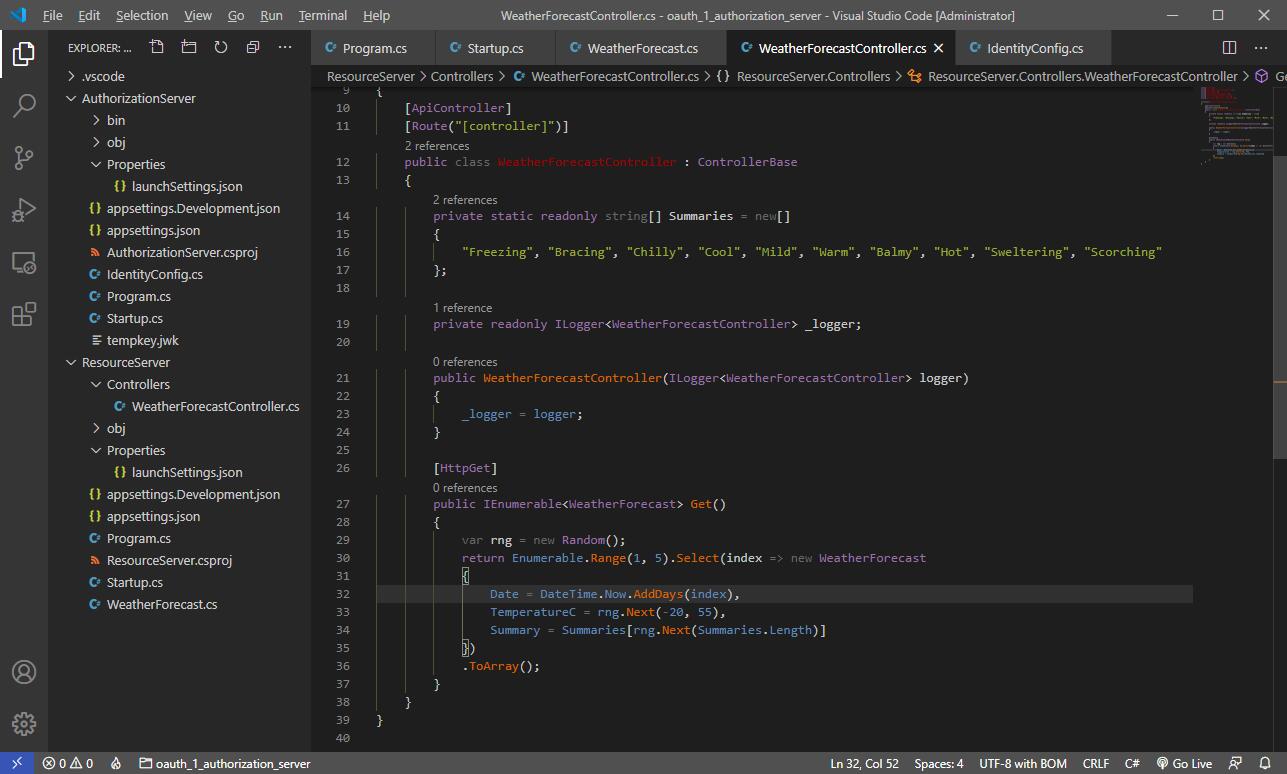
就用这个 API 来做演示,运行之前先修改一下端口号,因为模板创建出来的都是 https:5001 和 http:5000,等一下需要同时运行授权服务器和资源服务器,不修改的话就会冲突,打开目录文件 Properties -> launchSettings.json,修改 profiles -> ResourceServer -> applicationUrl
1 | "applicationUrl": "https://localhost:6001;http://localhost:6000", |
我这里修改为了 https:6001 和 http:6000,用命令把服务跑起来,然后用 Postman 请求一下
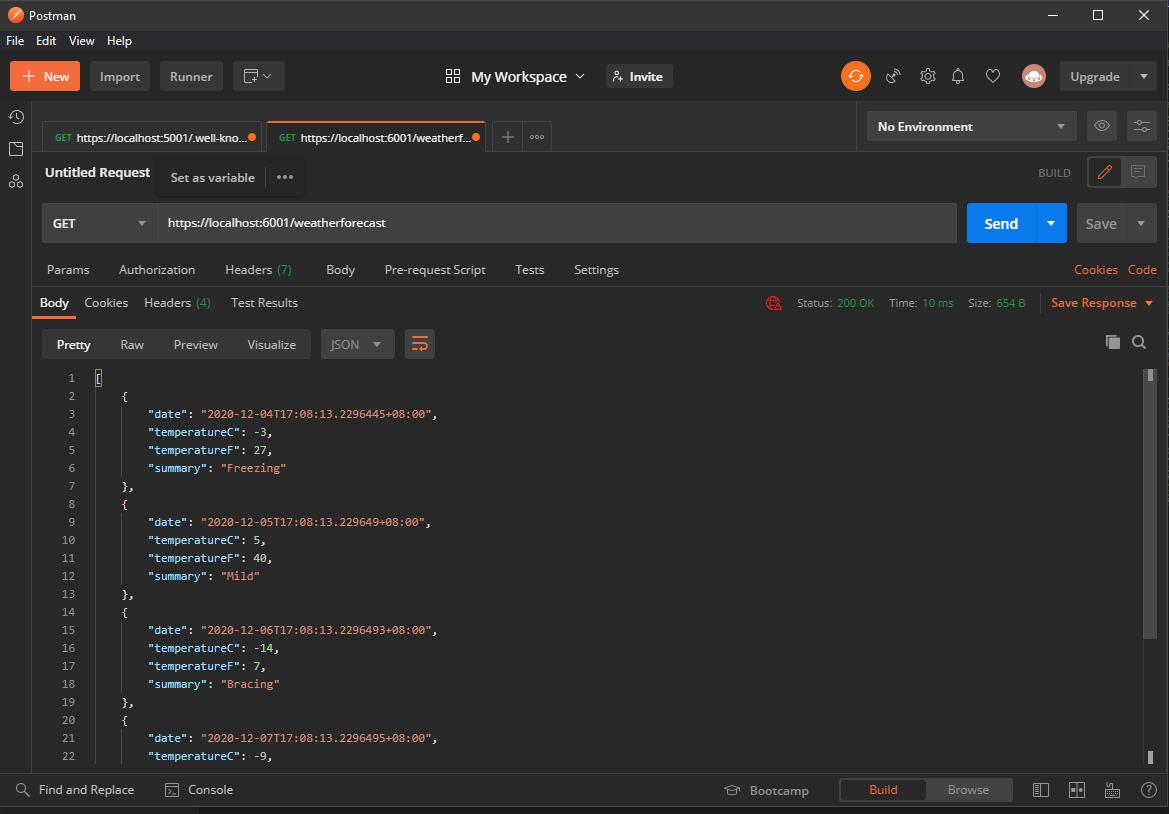
请求没有问题,因为还没有注入身份验证,所以 API 是未受保护的状态,不需要任何认证就会响应,接下来开始注入身份认证,先安装 IdentityServer4.AccessTokenValidation 运行库:
然后打开 Startup.cs,在 ConfigureServices 方法中添加如下:
1 | ... |
然后在 Configure 方法中启用身份验证(UseAuthentication 必须在 UseAuthorization 之前):
1 | ... |
设置权限,添加 AuthorizeAttribute,需要 Microsoft.AspNetCore.Authorization 此命名空间。
单独为 Action 设置权限
1 | [] |
也可以为整个 Controller 设置权限
1 | [] |
测试
当测试接口添加了需要认证以后,再次请求接口

会发现服务返回了 401 Unauthorized,未经授权的状态码,那是因为注入授权服务器以后,Postman 请求并没有去授权服务器拿 Access Token,没有 Access Token 所以资源服务器不会响应请求,正确的步骤是先去请求一个 Access Token,而这个过程就是客户端凭证模式,客户端通过自己的凭证去拿到令牌,然后才能成功的收到响应,我们来操作一下,两个服务都运行起来,打开到刚刚请求 API 的 Postman 页面:
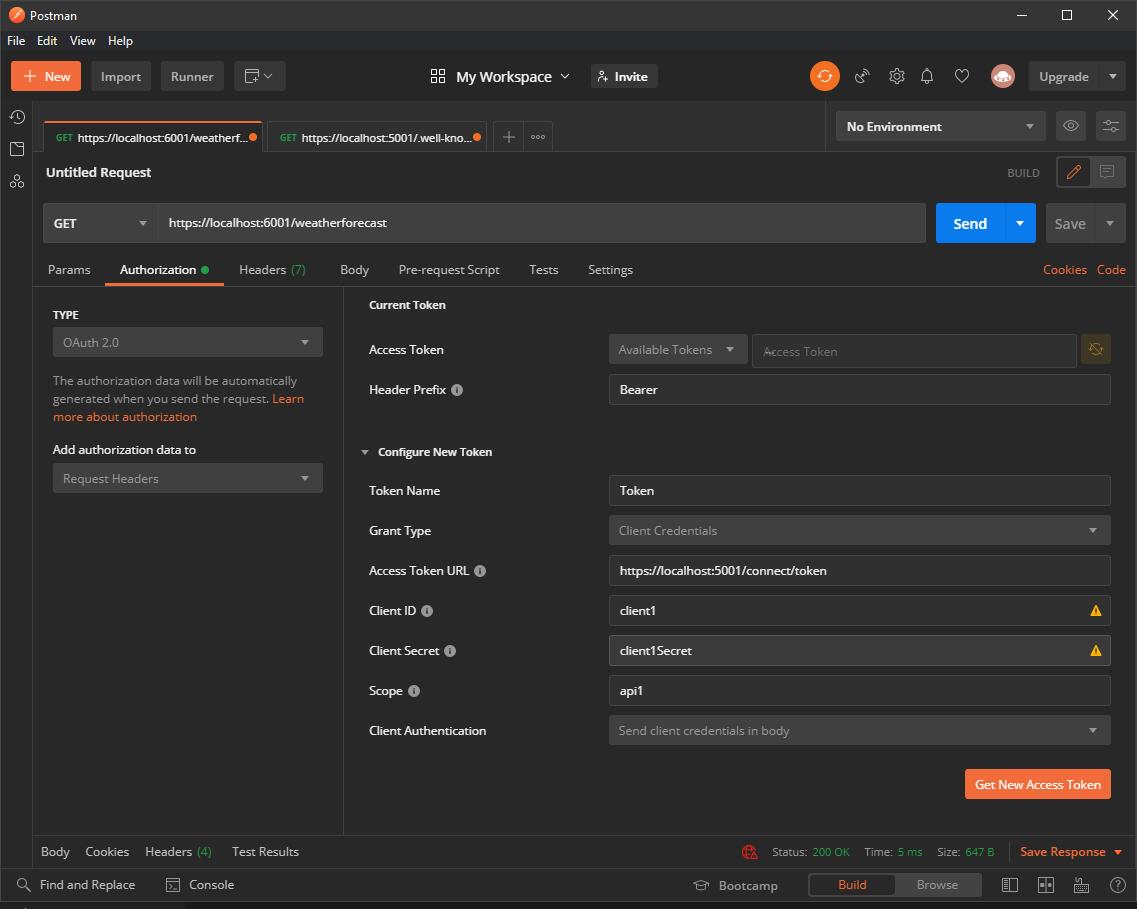
- 选择 Authorization 标签页
- 1.选择 Type -> OAuth 2.0
- 2.选择 Grant Type -> Client Credentials
- 3.输入 Access Token URL ->
https://localhost:5001/connect/token(IdentityServer4 默认令牌路由) - 4.输入 Client ID ->
client1(对应我们在授权服务器里设置 client1 授权配置) - 5.输入 Client Secret ->
client1Secret - 6.输入 Scope ->
api1 - 7.点击 Get New Access Token
点击以后,Postman 就会获取到 Authorization Token
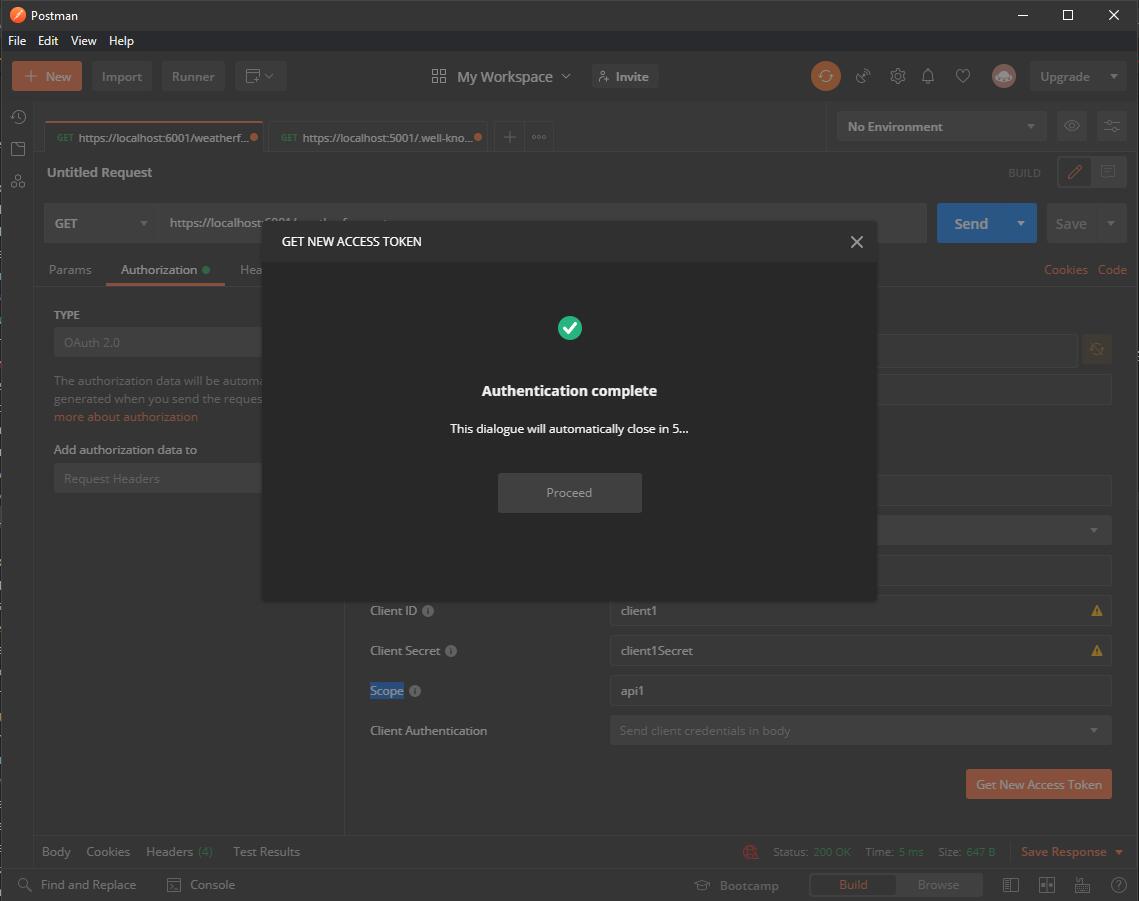
然后应用 Token 到请求头:

再次发送请求,服务器成功响应:
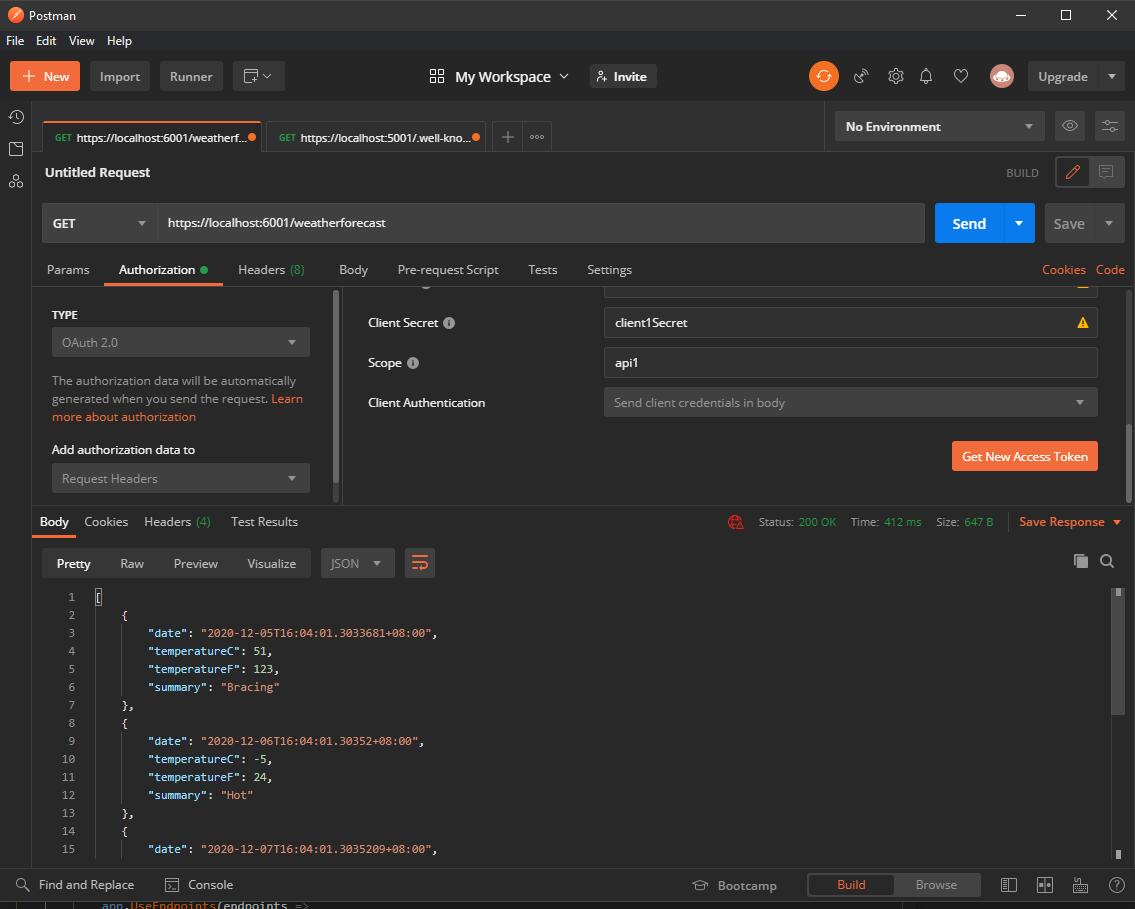
扩展 - Scope 认证
看完上面的示例以后,有同学会抛出疑问了,基于 User 的 ResourceOwnerPassword 认证方式可以配置接口的角色认证,比如管理员角色可以访问管理类型的接口,普通用户角色不可以访问,那这在 IdentityServer4 中的 ClientCredential 模式中如何实现类似的功能,答案就是多客户端+Scope 认证,我们可以配置那些客户端允许访问那些 API Scope,然后在资源服务器上面去配置接口只允许此 Scope 访问,我们看一下如何操作。
● 修改授权服务器
修改授权服务器的 IdentityConfig 配置类如下:
1 | using IdentityServer4.Models; |
然后在资源服务器的 Startup.cs -> ConfigureServices-> AddAuthorization 方法中作如下修改:
1 | ... |
最后是修改 AuthorizeAttribute,修改如下:
单独为 Action 设置权限
1 | [] |
也可以为整个 Controller 设置权限
1 | [] |
● 测试
使用 client1 获取一个令牌
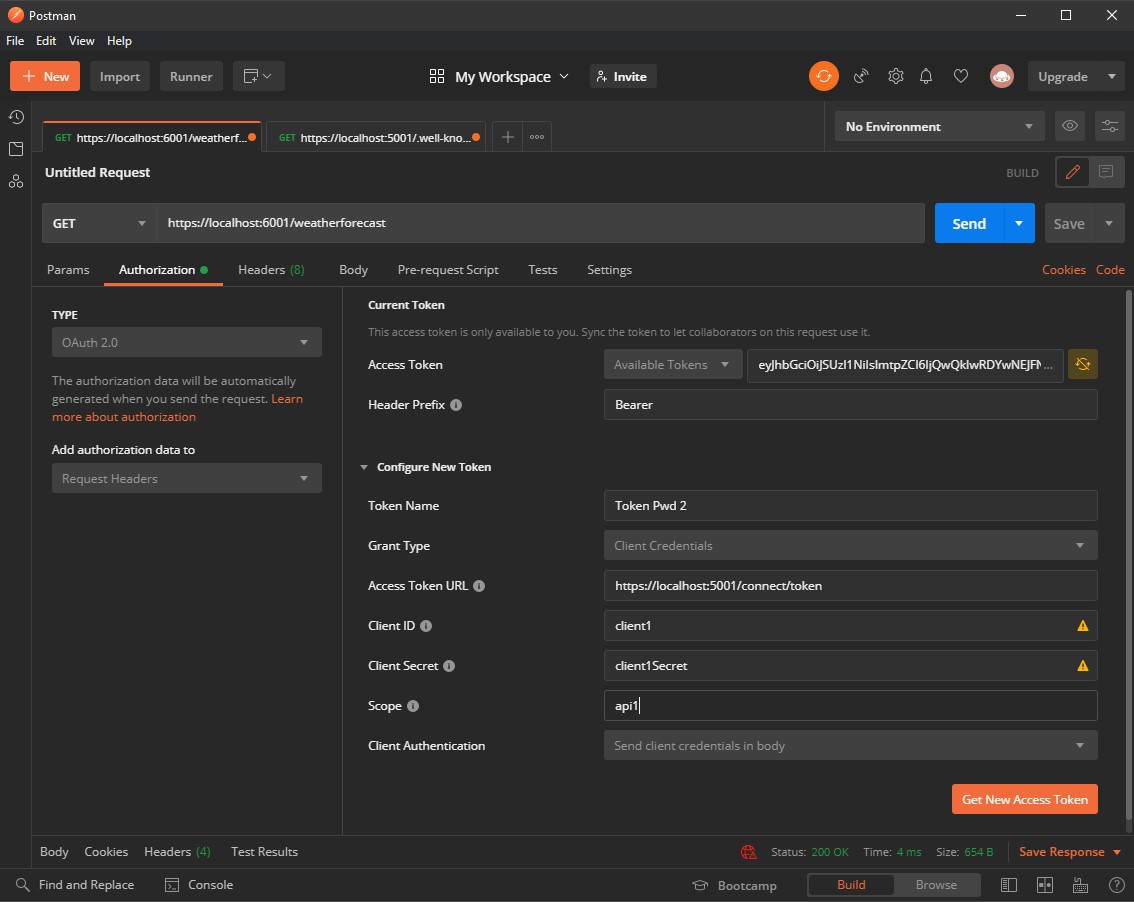
然后发送请求,会出现 403 Forbidden

修改为使用 client2 获取一个令牌
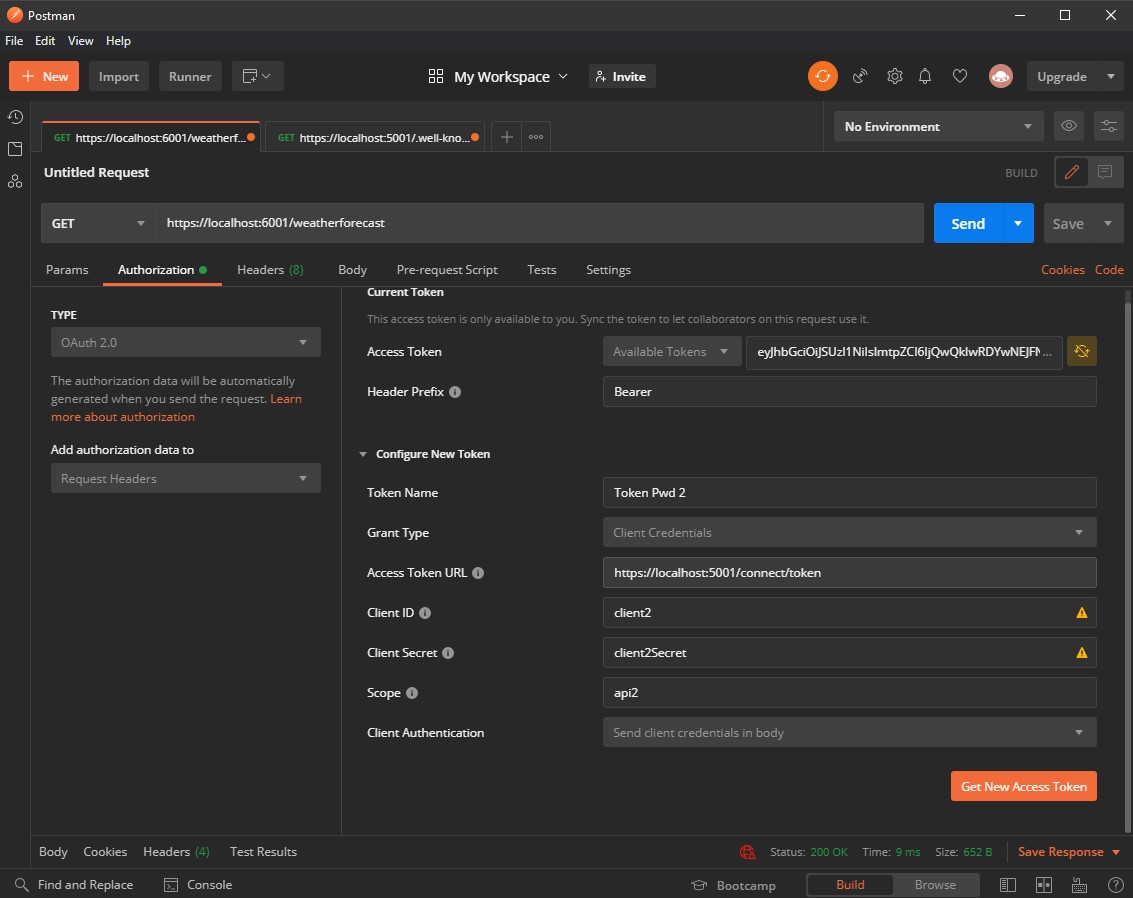
应用 token,然后发送请求,成功响应:
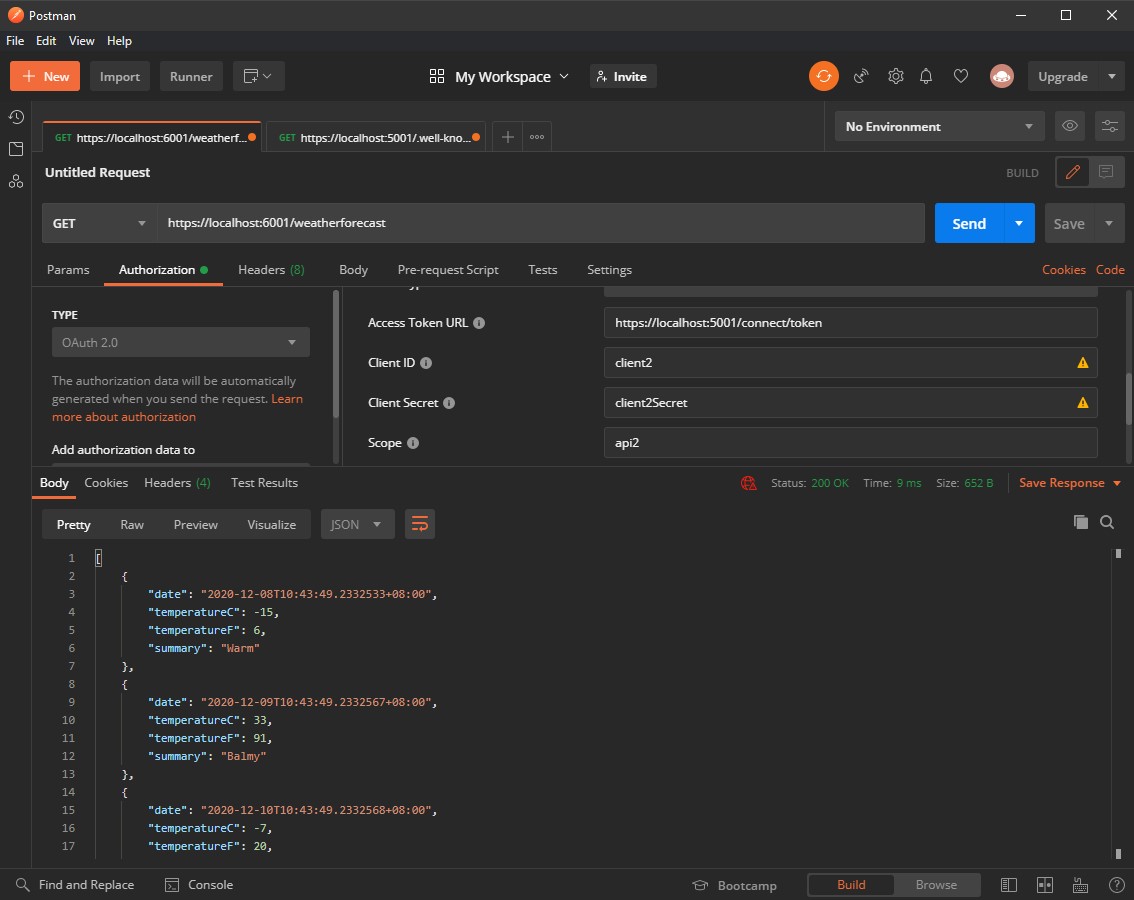
后言
到这里教程就结束了,前面说要重点说一下 AddInMemoryApiResources 这里涉及到的知识,在 IdentityServer4 最新版本中官方拆分了作用域和资源注册,先注册所有作用域(使用 AddInMemoryApiScopes 方法),然后再注册 API 资源(如果需要),然后 API 资源将按名称引用先前注册的范围,这里就是为什么我们在写 IdentityConfig 的时候有一个名为 GetApiResources 的方法,里头进行了这样的定义,然后再通过 AddInMemoryApiResources 添加配置
1 | ... |
因为 IdentityServer4.AccessTokenValidation 运行库默认是要验证 Audience 的,如果没有这个方法和不这样写 API 和 Scopes 之间的关系,那么生成的 Token 中就不会包含 aud 字段,而 IdentityServer4.AccessTokenValidation 默认会去解析 Audience,这样就会引发一个 IDX10214 错误
可以做个实验,把 AddInMemoryApiResources 方法去掉,用 postman 请求一下令牌,然后把令牌复制到 jwt.ms,会发现生成的令牌是不会包含 aud 字段:
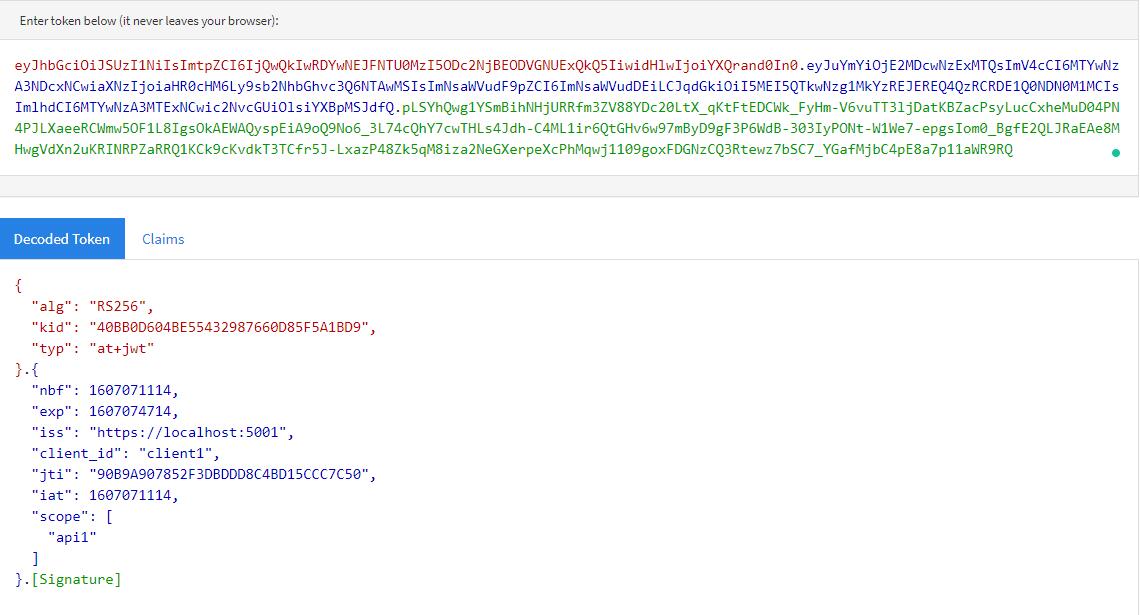
我们用这个令牌去发送请求就会得到上面的 IDX10214 错误,因为我们没有设置,所以获取到的 Audience 是空,我们还原 AddInMemoryApiResources 方法,然后重新请求一个,在复制到 jwt.ms 看一下
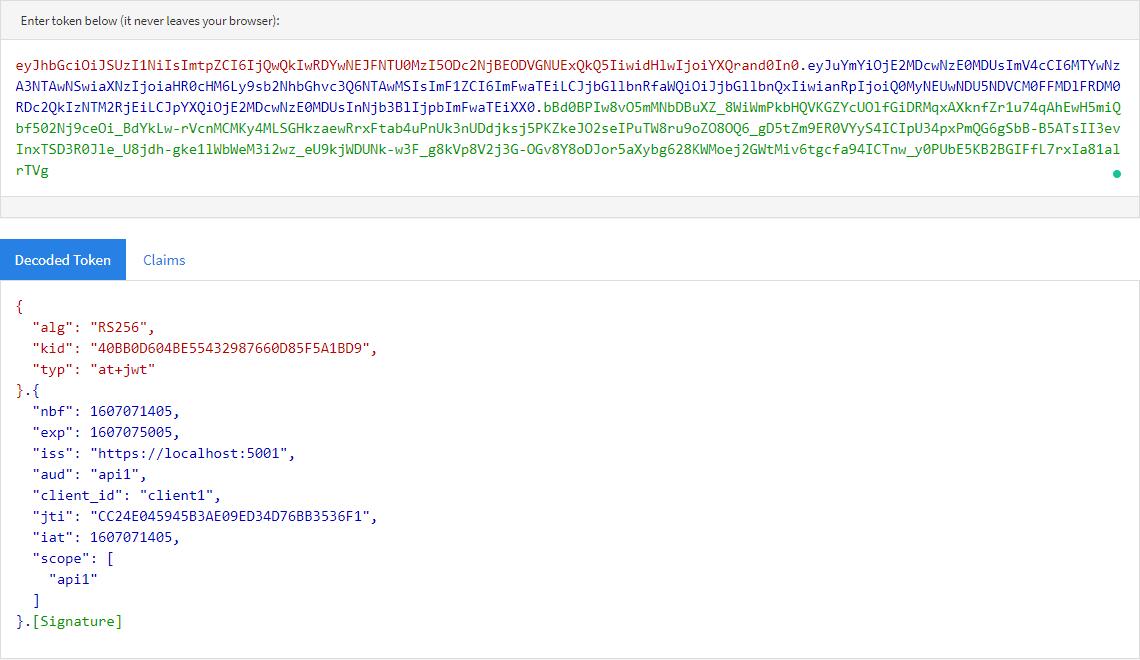
这样生成的令牌才是包含 aud 字段的,这样 IdentityServer4.AccessTokenValidation 去解析的时候才不会报错,重点来了,有没有办法可以不写 ApiResources 和 AddInMemoryApiResources 呢?有一个很简单的设置即可,那就是在资源服务器里头设置授权服务器配置的时候,加上
1 | ... |
这个设置,那么授权服务器就不会校验 Audience,也不会引发 Audience 解析错误。这样就简单的演示完了,谢谢大家,更深入的知识点大家可以去看 Dotnet Core 和 IdentityServer4 的官方文档。
